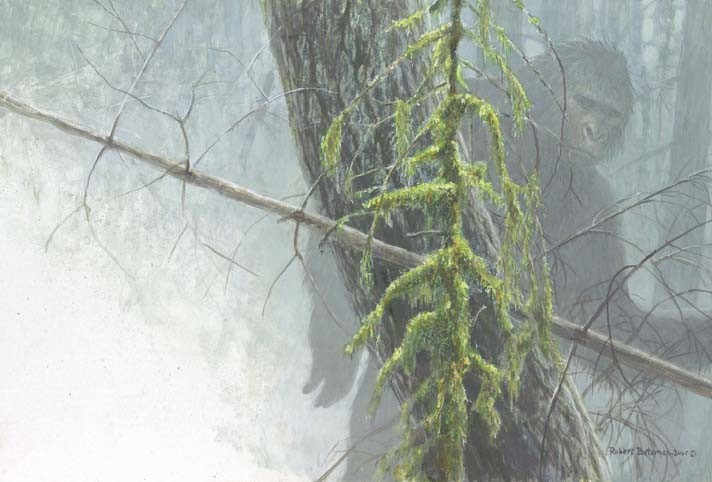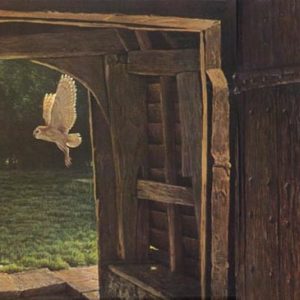Description
12-1/8 x 17-7/8; Offset Paper; Edition Size 950; SOLD OUT
“The moss-draped branches barely part as a large, dark shadow moves swiftly through the
northeastern forest. It is a vertical shape, over six feet tall; its long legs rule out a bear.
It must be a primate, but is it ape or human? Sasquatch Bigfoot
Apes do not stride in such a full, easy manner, and humans are not covered from head to toe
with shaggy, dark hair. There is no such animal in any of the mammal field guides, and yet it must
exist because there are so many reported sightings. Even allowing for some hoaxes and downright
fabrications, there are enough stories which have the ring of truth to convince some distinguished
scientists of the possibility of the existence of the huge man-ape creature. Even Jane Goodall and
George Schaller have been positive about the possibility.
The Salish tribe of southwest British Columbia call the being ” Sasquits,” meaning “hairy man,” from
which we have coined the name Sasquatch. It is also called Bigfoot since the footprints are up to
22″ long, averaging 16″ and one-third wider than human prints of the same length. Most of the
sightings come from remote, densely forested areas seldom visited by humans. Sasquatches are
generally shy and move away quickly, although a few frightening incidents have been reported.
Two men in a truck camper on the west side of Harrison Lake, B.C., noticed an ape-like face
in their window, and almost immediately afterward felt their vehicle being shaken, as if to overturn
it. Uncommonly ther are intimidation displays – breaking branches, running back and forth and
throwing stones. These are behaviors similar to those of chimps when they are angry or distressed.
Perhaps this rare animal is a descendant of Gigantopithecus, a giant fossil ape of Asia.
But until we get some tangible evidence – bones, teeth, hair – that can be submitted
to DNA testing, this fascinating mammal will not appear in the field guides.”
Robert Bateman


